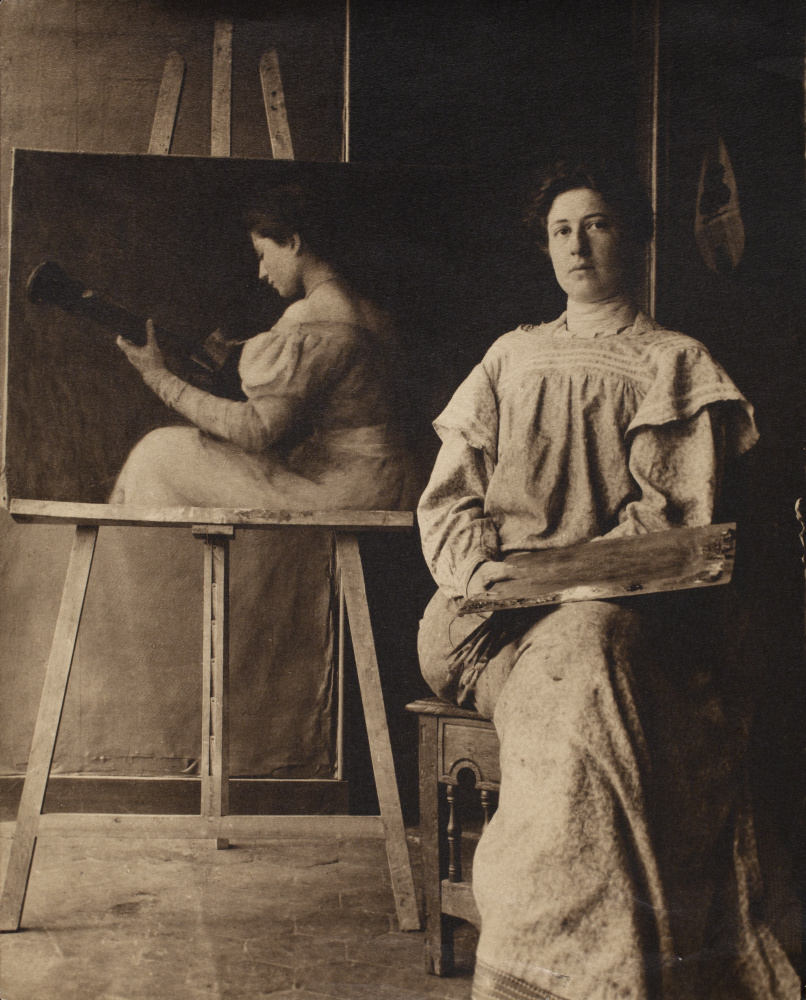- Closed today. View hours.
- Parking & Directions
- Free Admission
Susan Watkins: The Hidden Woman
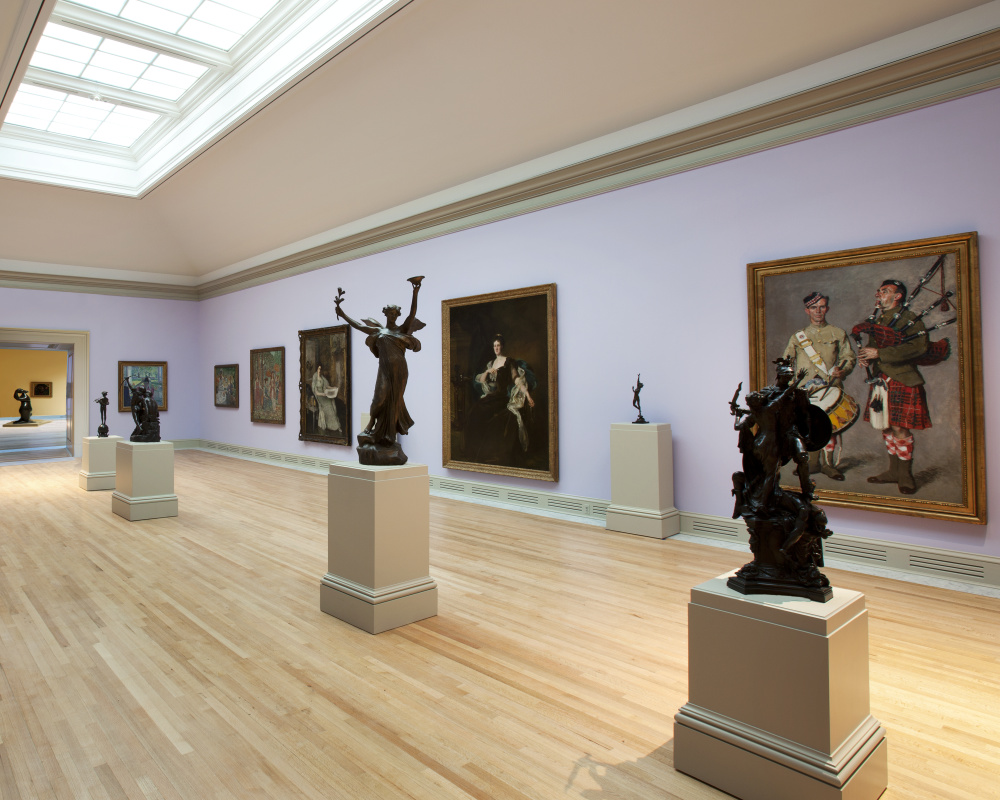
American Impressionist Gallery, Gallery 218
As docents, we have the privilege of coming to know the Chrysler Museum’s artworks personally—not only through study and introducing them to visitors but also in the times of quiet wonder between tours when galleries empty and we can simply be with the art. Surrounded by so many works, all sorts of cultural and historic references rush into our minds. A feeling that we know the artists personally can’t be ignored. Cézanne stood right where I’m standing and painted this canvas? Wow! And that’s a work by Bouguereau himself? And a Georgia O’Keeffe? A Kehinde Wiley right here? With me? In those moments, each gaze prompts a new discovery or revelation. And yes, even a crush on favorites.
My crush is on a California-born, New-York-City-bred, gifted, and ambitious young woman: Susan Watkins (1875–1913). Although she lived well before my time, I feel I’ve met her. Our introduction to one another came through her work. It graces the gallery walls at the Chrysler, and much more of it hides away safely in the Museum’s collection storage. It’s the bulk of her life’s work, gifted by a man who knew that one day someone would want to understand the woman he loved.
It’s possible Susan was robbed of the acclaim she deserved as an artist simply by being a woman. She exhibited internationally, won noteworthy awards during her lifetime, and was highly regarded as a portraitist. Yet, society often looked unkindly upon women of her social standing—upper middle class—who seriously considered a career. During her lifetime, women could not vote. For many, marriage was a woman’s ultimate success. To wiggle around that, many women artists like Susan strung suitors along for years or simply decided not to marry. It took great strength for them to pursue their work when society limited the places and subjects they could paint. They suffered criticism and scorn frequently. No woman would have dreamed of sitting in dance halls like Toulouse-Lautrec and sketching women kicking their legs in the air. Respectable women painters stuck to subjects like gardens, home interiors, and mothers and children—things they lived with. Only extremely confident artists like Mary Cassatt beat those odds.
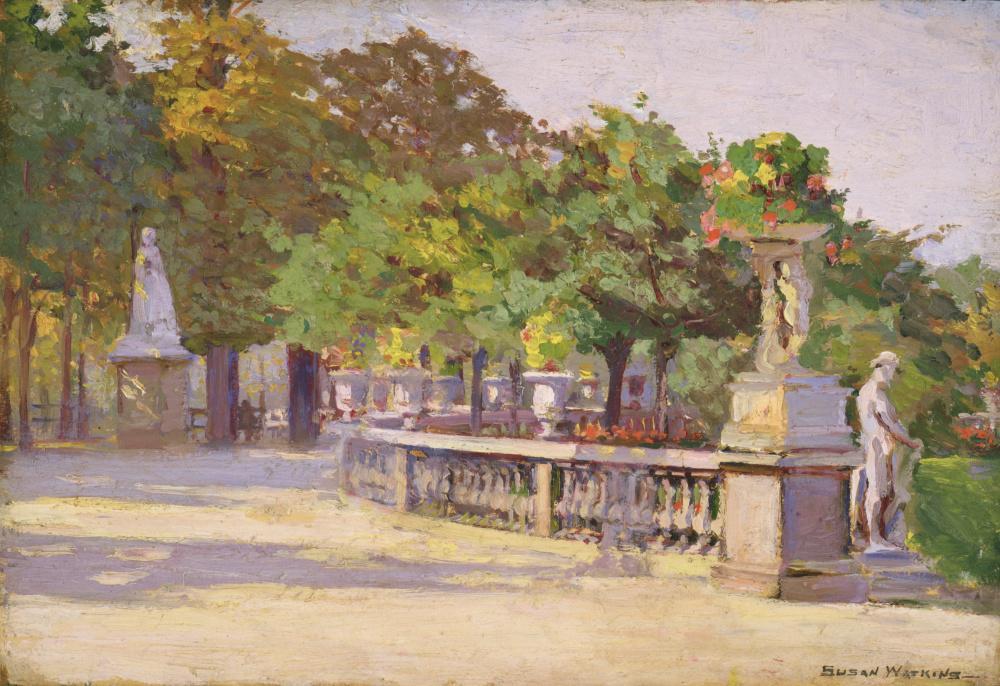
Susan Watkins (American, 1875–1913), Untitled (View of the Jardin du Luxembourg, Paris), ca. 1908, Oil on board, Goldsborough Serpell Bequest, 46.76.171
Confidence takes many forms, though, and I think Susan had plenty. She did not allow her time period to hamper her growth as an academic painter or restrict her ability to develop a virtuoso’s looser brushwork. If she had lived through both world wars, which changed the way artists across the world depicted life, she might have changed her own realist style. But time wasn’t on her side. She put down her brush and married the man she loved when she became too ill to paint.
In the quiet times I spend with her art, I wish she’d show up for a chat. But in truth, her artwork is her voice. Her paintings speak from the Chrysler’s walls. It’s evident that painting brought her joy. The beauty of Marguerite (1906) can’t be denied. It always evokes sighs from Chrysler visitors. The 1830s Girl (Portrait of Miss M.P.), an evocative costume piece, solidified Susan’s reputation in traditional Parisian and international art circles—not bad for a budding young artist. It also won a third-class gold medal at the 1901 Salon and a silver at the 1904 Universal Exposition in Saint Louis, Missouri. Susan was “on the map” during her lifetime.
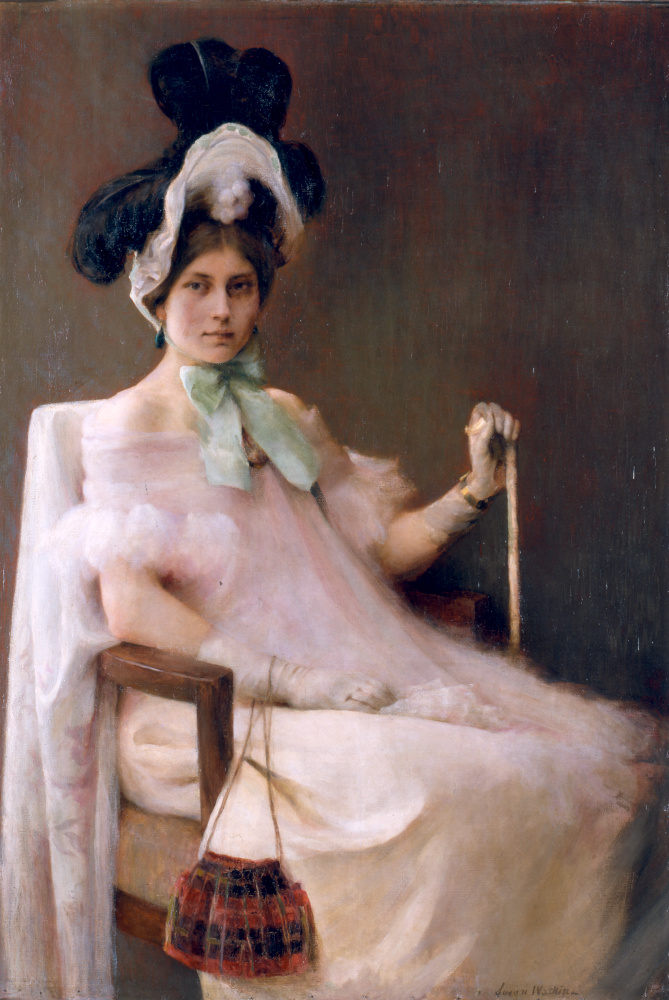
Susan Watkins (American, 1875–1913), The 1830 Girl (Portrait of Miss M.P. in Louis Philippe Costume), 1900, Oil on canvas, Goldsborough Serpell Bequest, 46.76.147
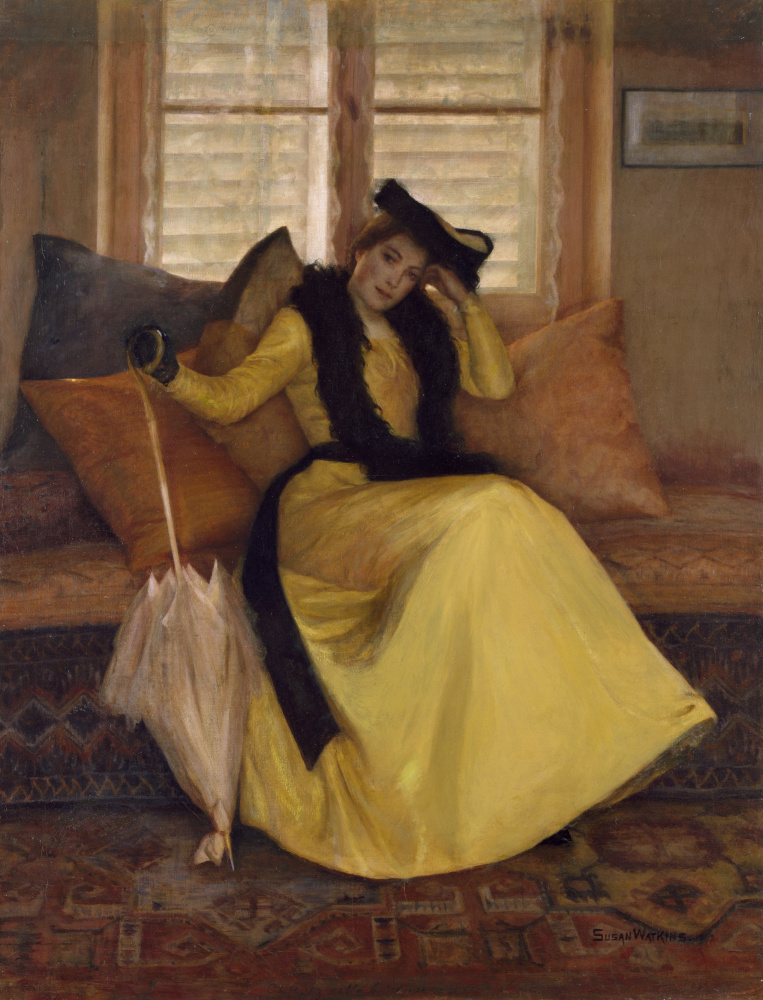
Susan Watkins (American, 1875–1913), Lady in Yellow (Eleanor Reeves), 1902, Oil on canvas, Bequest of Goldsborough Serpell, 46.76.137
She painted Lady in Yellow (Eleanor Reeves), a portrait of her Navy-wife sister, in 1902. Imagine sisters staring at each other long enough for Susan to paint this parlor piece. A “male gaze” painting this is not. It’s more about a shared joke or an irritated sister who’s sat too long. The work was created four years before the San Francisco earthquake. At the time of the earthquake, Susan was living in Paris and was likely distressed over reports of her hometown’s devastation. She received updates from her brother, a San Francisco physician, and his wife, a trained physician who was no longer practicing because she chose marriage. The quake did not devastate Susan’s personal holdings as it did so many others. She could always afford herself, painting or not.
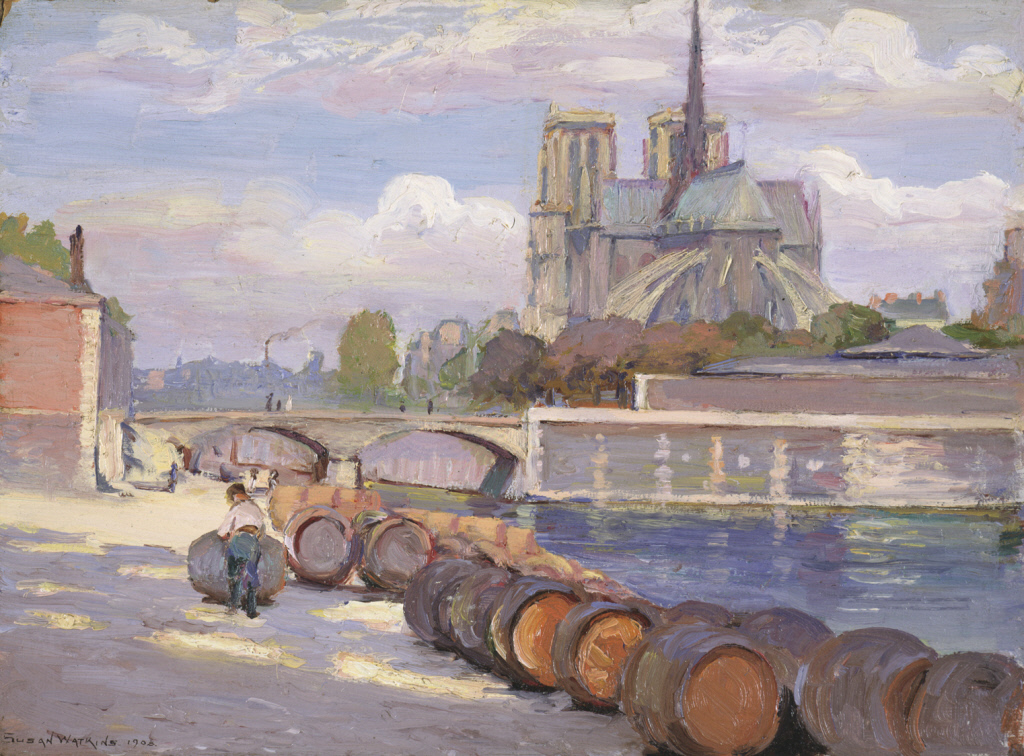
Susan Watkins (American, 1875–1913), Untitled (View of the Seine and Notre Dame from the Quai de la Tournelle, Paris), ca. 1908 Oil on board Goldsborough Serpell Bequest, 46.76.141
Susan painted through various art movements. Living in Paris across two seminal decades, she would have been aware of swiftly changing styles and vogues, but it doesn’t appear that she wanted to upturn or challenge the official art world—intentions that drive so many artists. I believe she developed a crystal clear intention regarding her work, which mirrored her personality to paint with honesty, control, and subtle feeling, and to perfect the craft.
Thankfully, Susan’s voice—not much of it but enough—exists in print. She gave the New York Times an interview in 1910, three years before her untimely death to cancer. She simply suggested that a career “is a tremendously fine thing to accomplish. Money, social honors, a brilliant marriage are all very well…, but to work out things with one’s hands and brains gives the most lasting and most perfect happiness.”

Susan Watkins (American, 1875–1913) Marguerite, ca. 1906, Oil on canvas, Bequest of Goldsborough Serpell, 46.76.146
Who was Susan Watkins? The real answer died with her. She was just another woman among many painting in fin de siècle Paris. Or was she? Look at her work. Maybe her time period stood in the way of the fame we wish she’d won. But her paintings are proof of huge personal success. Her hand is still with us. Evidence of her artistic choices, her sensibilities, her muses, and her skill live on. Susan was a person who faced limited time but had the great fortune to discover her passion early and practice it all her life. Perhaps, that’s exactly what she wanted—and enough.
– Alva Moore, Docent, Chrysler Museum of Art


